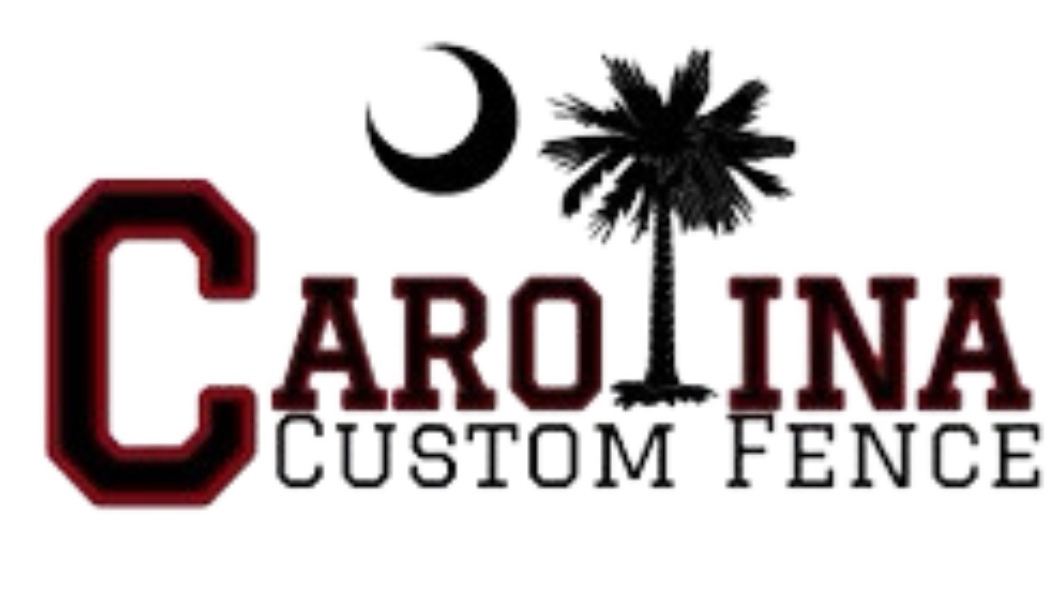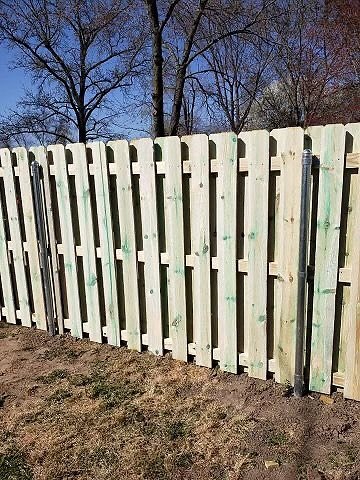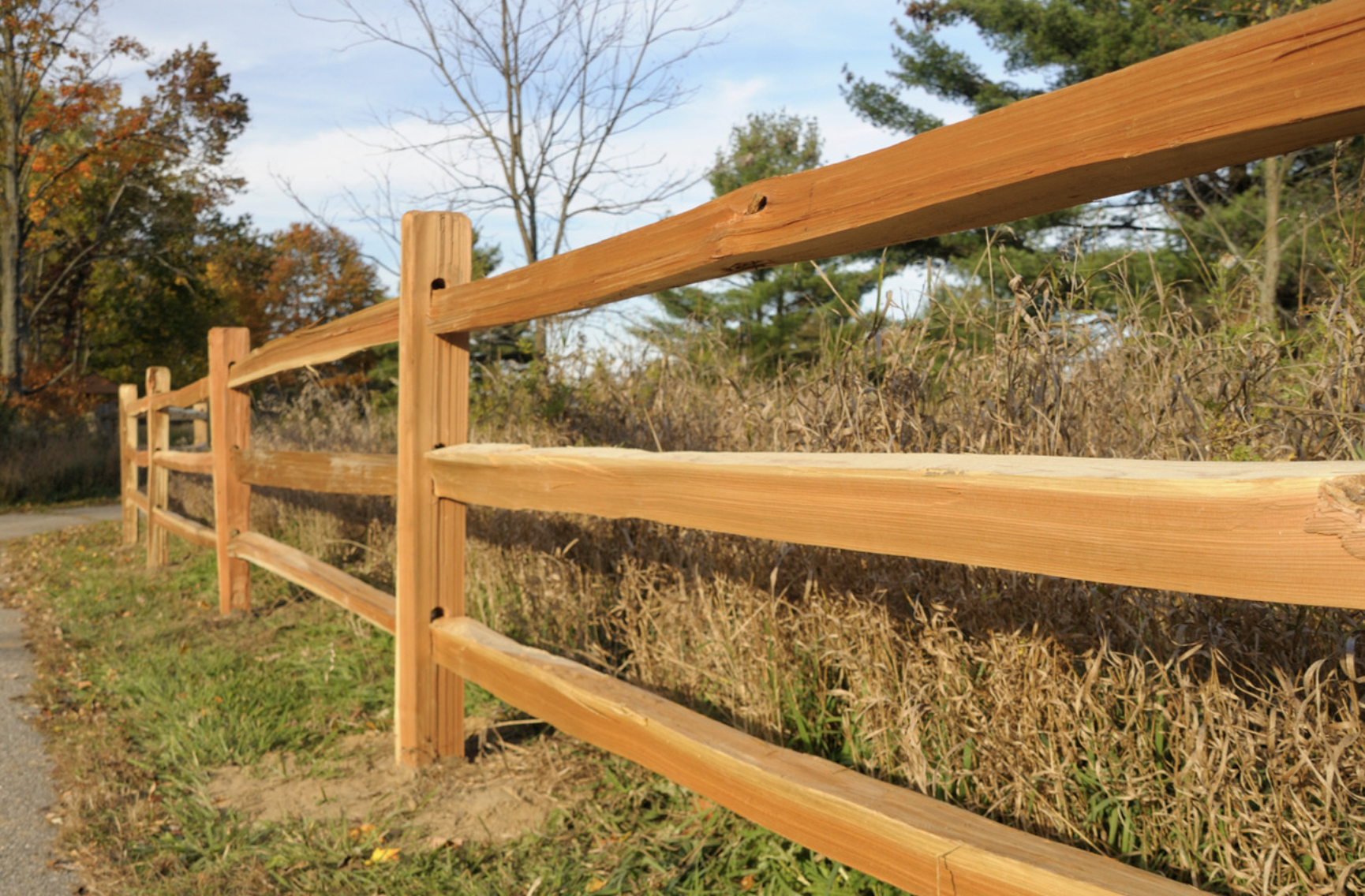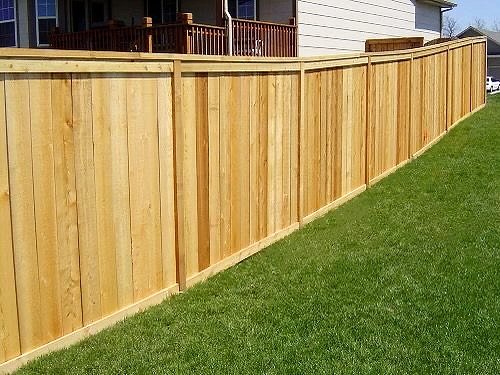Wood Fencing
Wood fencing, also known as wooden fencing or timber fencing, is a popular and traditional type of fencing used for various purposes, including privacy, security, decoration, and boundary delineation. It's valued for its natural beauty, versatility, and relatively easy installation. Wood fencing can be found in residential, commercial, and agricultural settings and comes in a wide range of styles, designs, and wood types.
Shadowbox
Shadowbox wood fencing, also known as "good-neighbor fencing" or "neighbor-friendly fencing," is a type of privacy fence that is designed to provide an attractive and functional barrier between properties while maintaining a more open and less imposing appearance compared to solid fencing. This type of fencing is often used in residential settings to enclose yards, gardens, or outdoor living spaces. It's a popular choice for homeowners who want a balance between privacy and aesthetics, as the alternating pattern adds depth and visual interest to the fence while providing a degree of seclusion.
Board on Board
Board-on-board wood fencing is a type of fencing design that involves placing vertical wooden boards alternatively on either side of the fence rails. This creates an overlapping pattern where each board partially covers the gap left by the adjacent board, providing additional privacy and aesthetic appeal to the fence. This design offers a solid and visually pleasing barrier, often used for residential, commercial, or agricultural purposes.
Split Rail
Split rail wood fencing, also known as split rail fence, is a rustic type of fence made from wooden logs or rails that are split lengthwise into two or more sections. The main characteristic of split rail fencing is its simple and natural appearance, often used to define property boundaries or enclose areas like farms, fields, or gardens. The fence typically consists of horizontal rails that are inserted into vertical posts, creating a visually appealing and open structure. Split rail wood fencing is popular for its charm, durability, and suitability for rural or countryside settings.
Board on Board Cap and Trim
Board on board cap and trim wood fencing is a type of fence where vertical boards overlap, a cap runs along the top for protection and aesthetics, and decorative trim elements are added to enhance the overall look of the fence. This type of fencing is often chosen for its privacy, durability, and decorative value.
Arched
Stockade
Stockade wood fencing is a type of fence made by closely spaced vertical wooden boards or panels that are typically installed side by side without gaps. This type of fencing creates a solid barrier that offers privacy and security. The boards are often pointed at the top for added deterrence and aesthetics. Stockade wood fencing is commonly used in residential and commercial settings to define property boundaries, provide privacy, and enhance the appearance of the property.
Picket
Picket wood fencing, often referred to as a "picket fence," is a type of traditional fence design commonly used in residential settings. It consists of vertical wooden boards or pickets that are attached to horizontal rails, creating a visually appealing and functional barrier around a property. Picket fences are known for their charming and classic appearance, often painted white, and they are frequently used to enclose front yards, gardens, and other outdoor spaces.
Cap and Trim
Cap and trim wood fencing" is a type of fence construction that involves placing a cap (horizontal piece of wood) on top of the vertical posts and adding trim (decorative or functional pieces of wood) to enhance the appearance and functionality of the fence. This style of fencing not only provides a finished look but also helps protect the tops of the posts from weathering and moisture, potentially extending the lifespan of the fence.
Arched wood fencing refers to a type of wooden fence that features a curved or arched design along the top edge. This design element adds a touch of elegance and visual interest to the fence while also providing functional privacy and boundary delineation. The arch can vary in its curvature, ranging from a gentle, subtle curve to a more pronounced and dramatic arc, depending on the aesthetic preferences of the design and the purpose of the fence.
Scalloped
Scalloped wood fencing refers to a type of wooden fence design where the top edge of the fence panels has a decorative wavy or curved pattern, resembling the shape of scallop shells. This design adds a touch of elegance and visual interest to the fence, making it stand out as a decorative element in addition to its functional purpose of providing privacy and defining property boundaries. The scalloped pattern is created by cutting the top edge of the fence panels in a repeating curve or wave design, giving the fence a unique and charming appearance.
Rail
Rail wood fencing, also known post and rail fencing, is a type of fencing made from wooden rails that are typically split or sawn from logs. This type of fencing is constructed by placing horizontal rails between vertical posts. It's a rustic and traditional style of fencing often used in rural and agricultural settings. The open design of rail wood fencing allows for visibility while still providing a boundary or enclosure for a property or livestock. It's commonly used to mark property lines, contain livestock, or provide a decorative border.
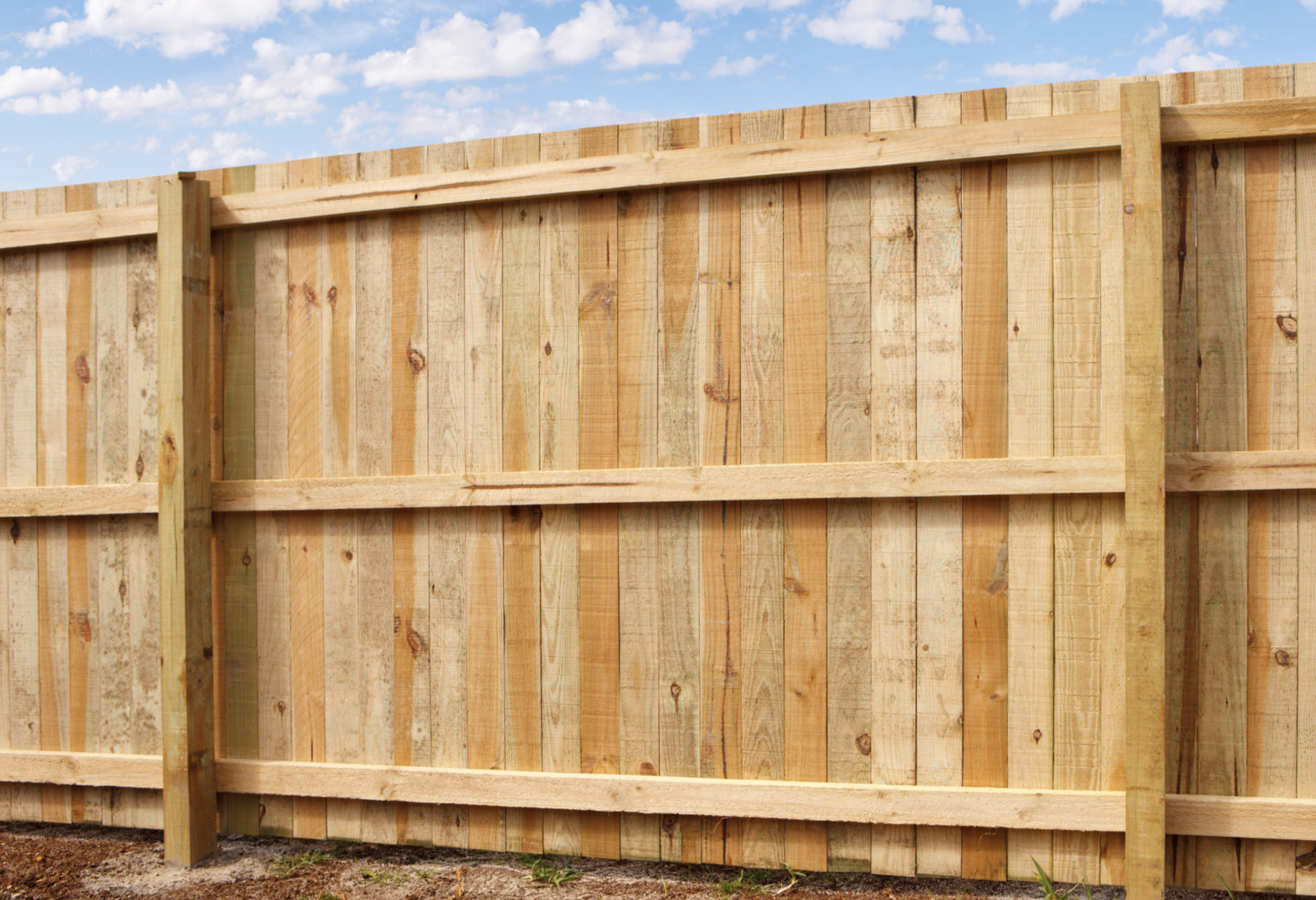
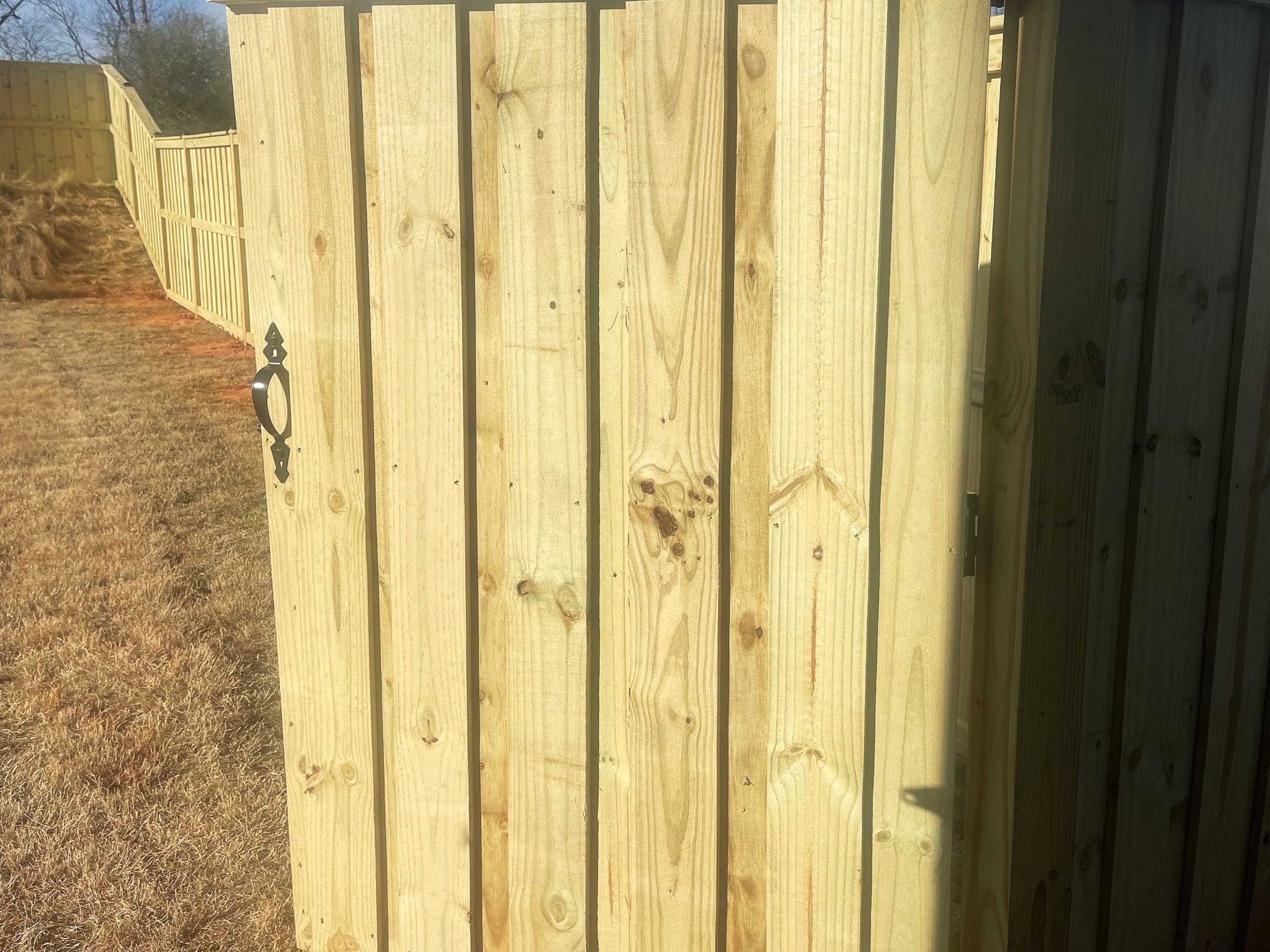

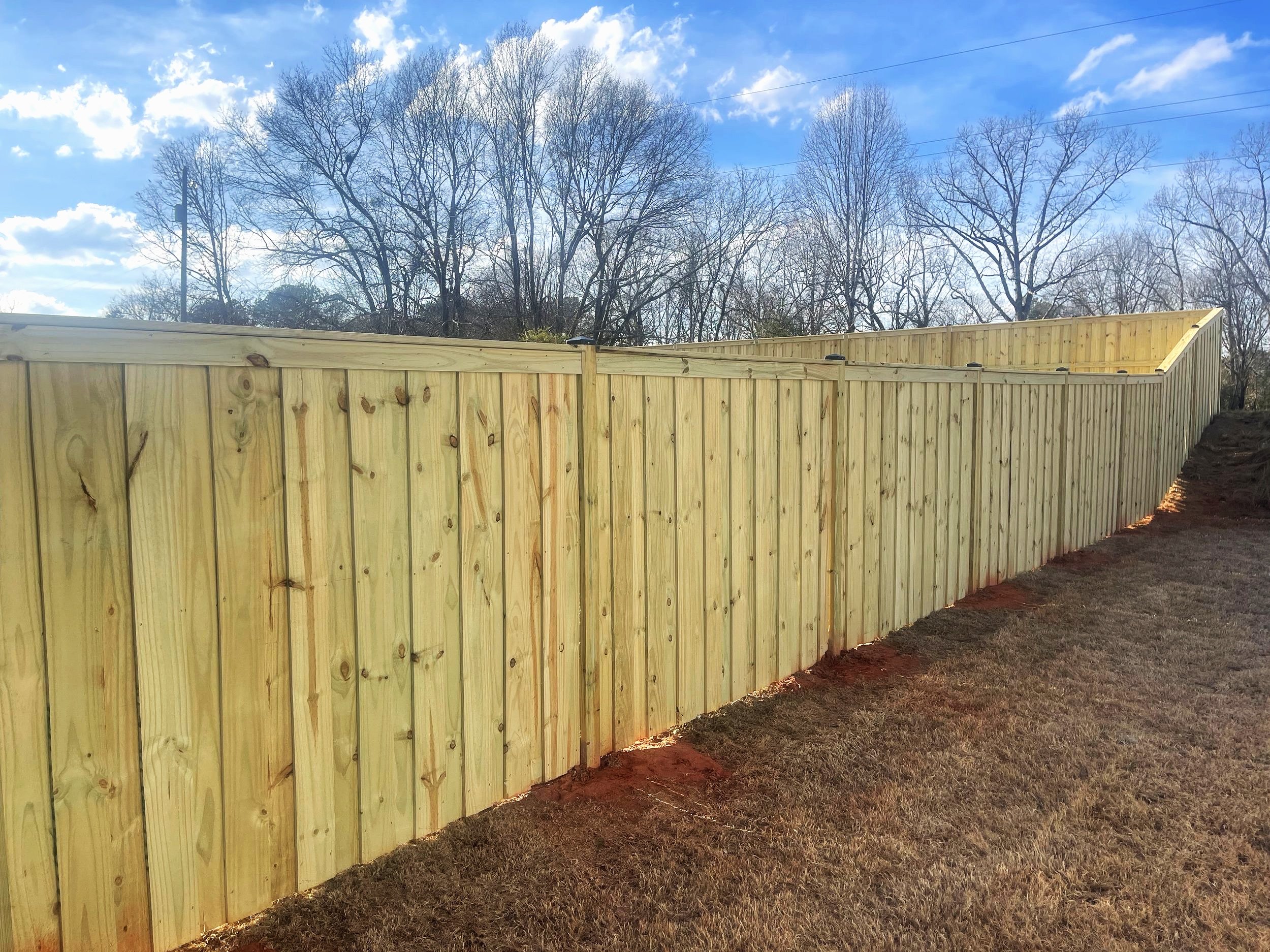
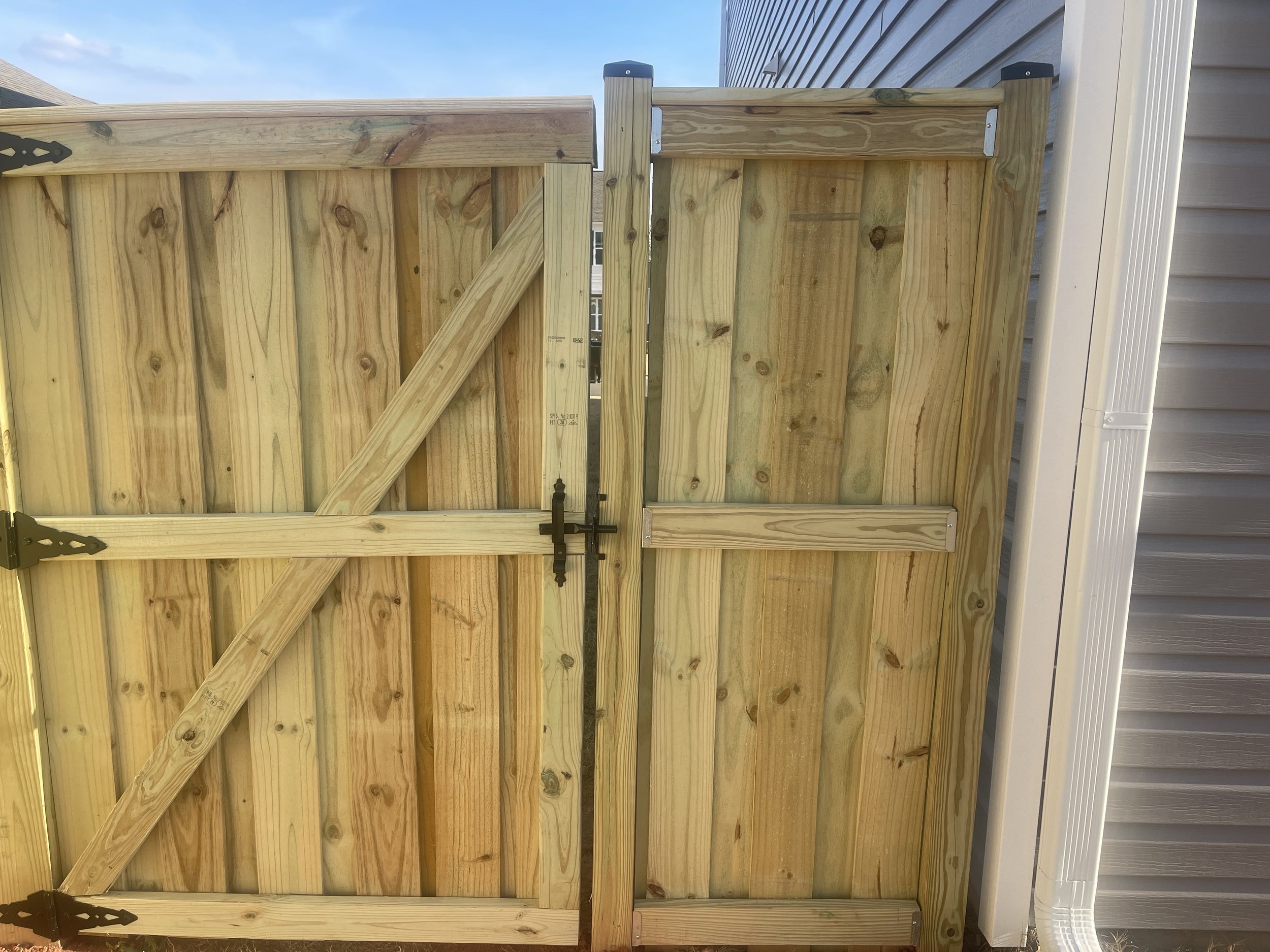
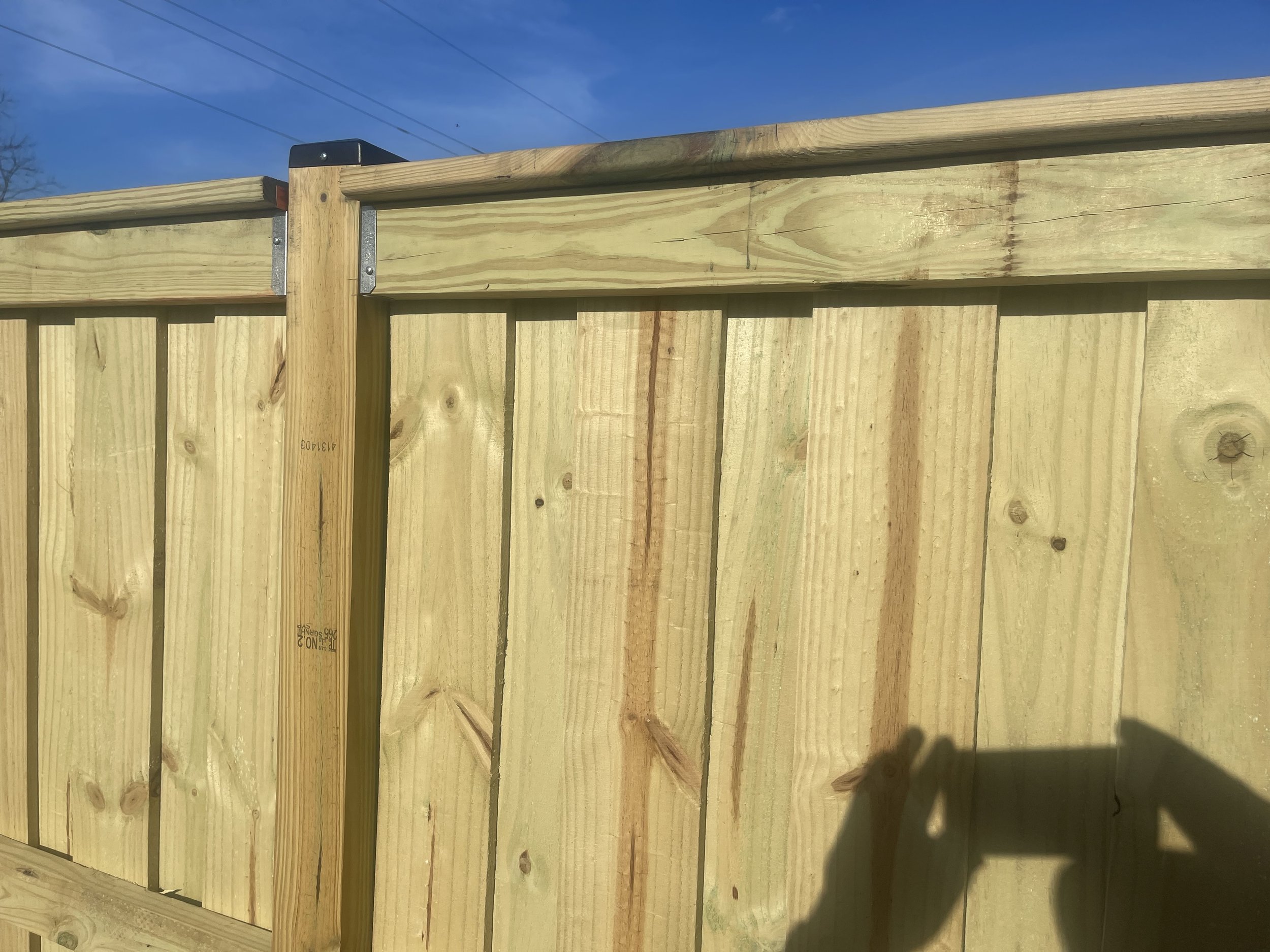
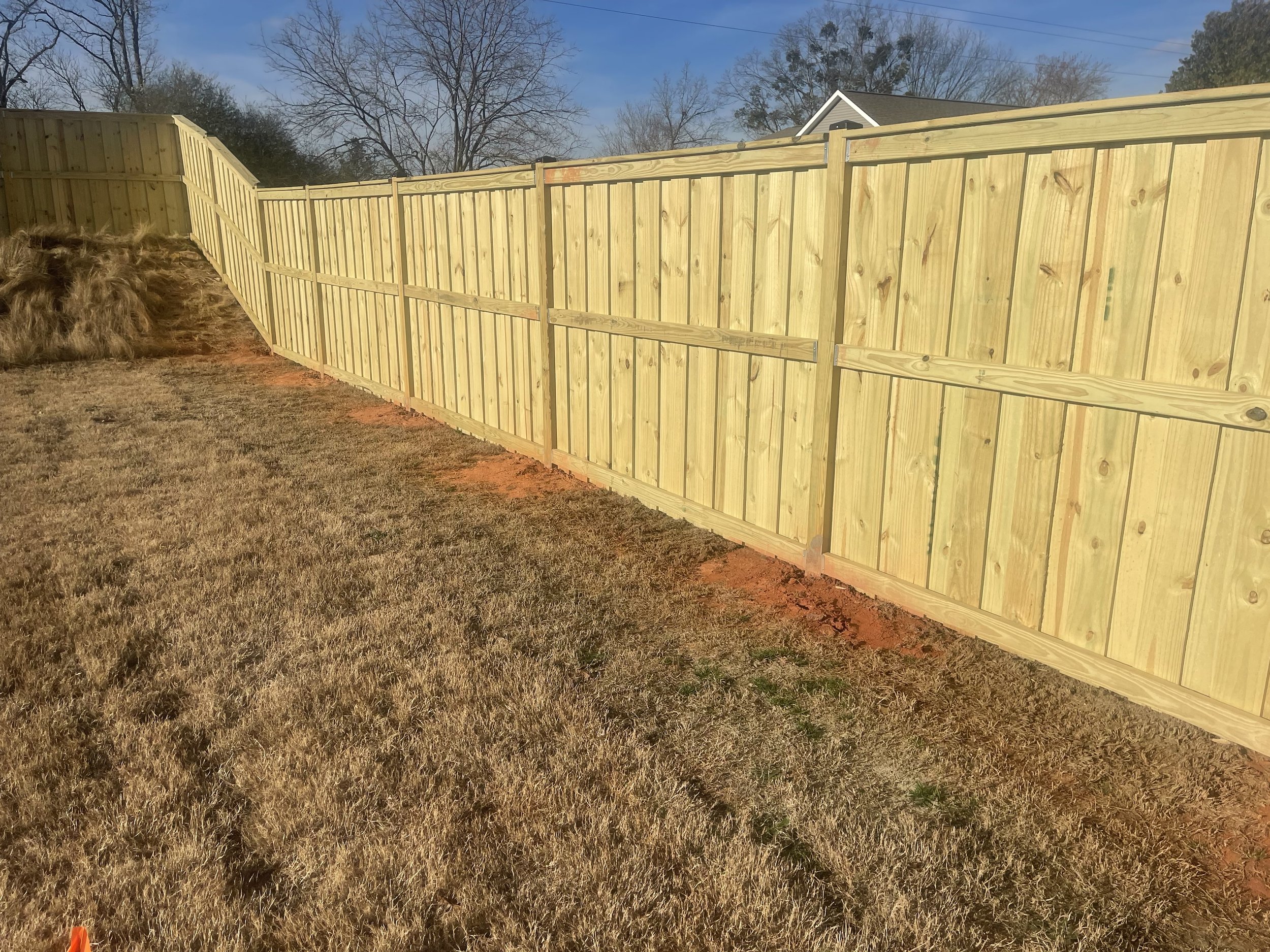
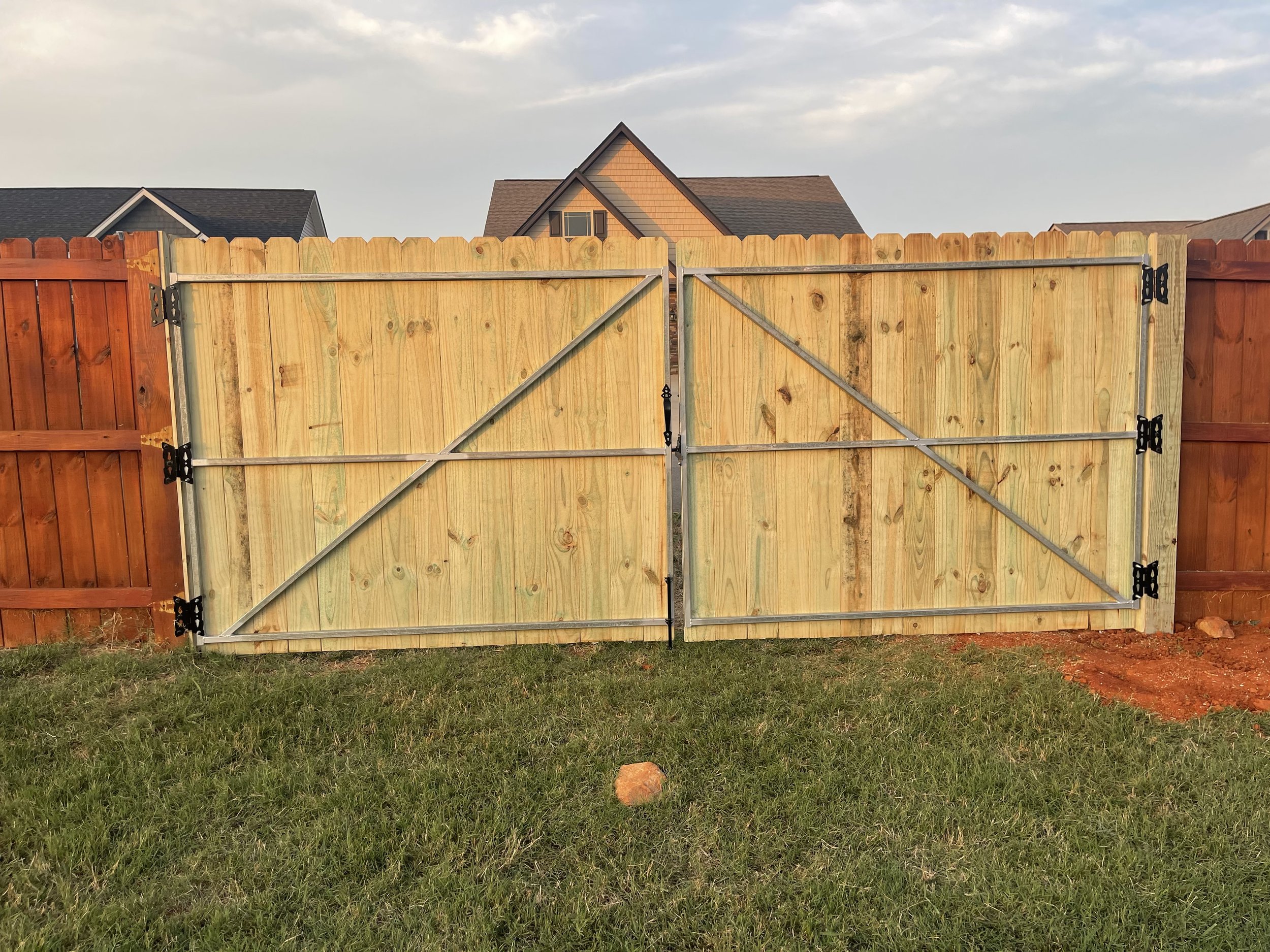
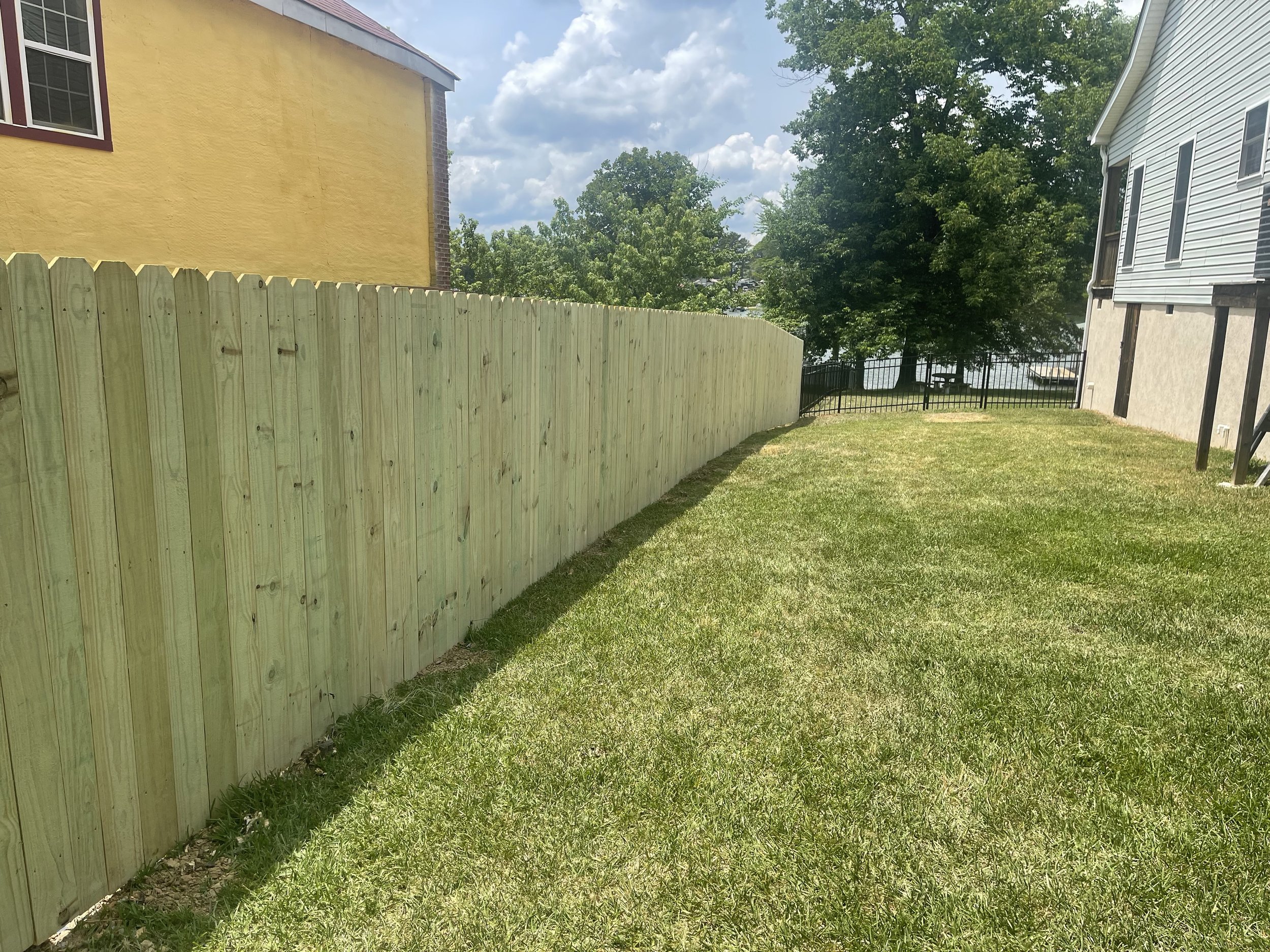

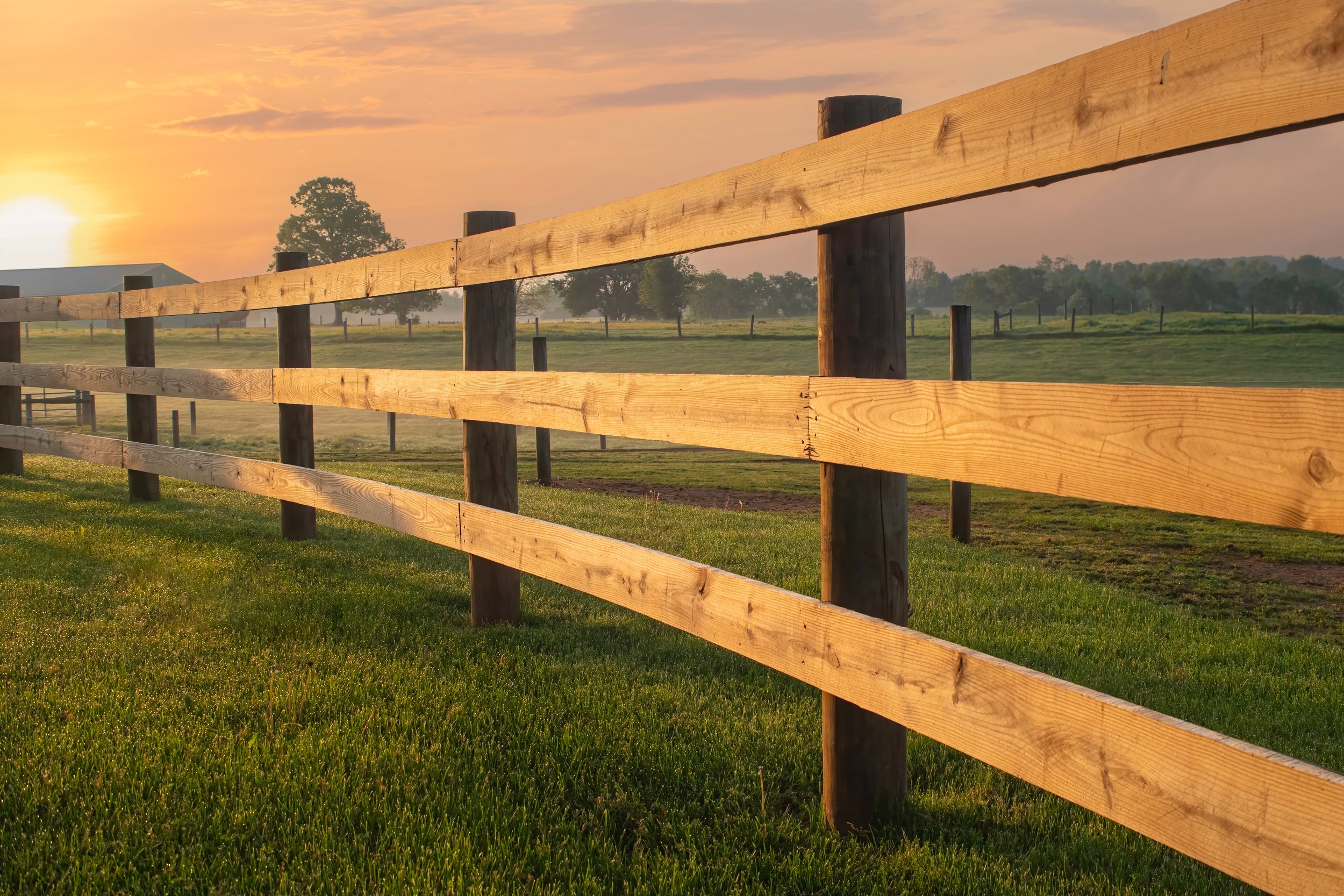
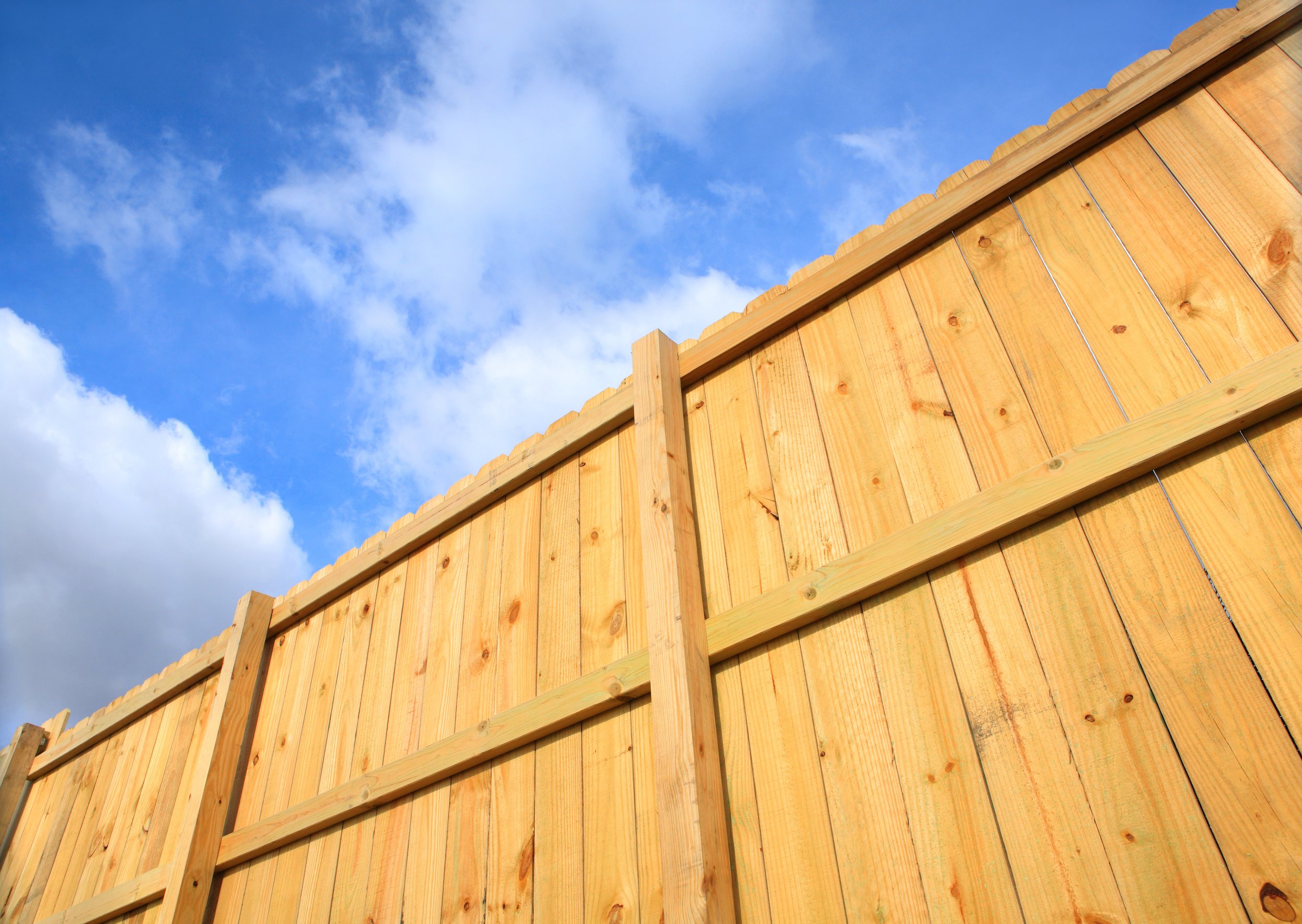
Advantages of Wood Fencing:
1. Aesthetic Appeal: Wood fences have a natural and timeless appearance that complements various architectural styles and landscapes.
2. Versatility: Wood can be easily customized, allowing for various designs, finishes, and paint or stain options.
3. Environmentally Friendly: Wood is a renewable resource, and if sourced responsibly, it can be an environmentally friendly fencing option.
4. Variety of Wood Types: Different types of wood, such as cedar, redwood, pine, and cypress, offer different levels of durability and resistance to decay and insects.
Considerations and Maintenance:
1. Maintenance: Wood fences require periodic maintenance, such as staining or painting, to protect them from weathering, decay, and pests
2. Durability: The durability of wood fencing depends on the type of wood used and its exposure to environmental factors. Some woods are naturally more resistant to decay and insects.
3. Cost: The cost of wood fencing varies based on factors such as the type of wood, design complexity, and installation method.
4. Weather Resistance: Wood fences can be susceptible to weather-related damage, such as warping, cracking, and rotting, if not properly maintained.
5. Installation: While wood fence installation can be done by homeowners, it's recommended to hire professionals for more complex designs or larger projects to ensure stability and longevity.
CONTACT
Hello there! We're thrilled that you're interested in our free onsite consultation service. We kindly ask you to fill out the contact form below. Your consultation request is important to us, and we will reach out to you shortly.
